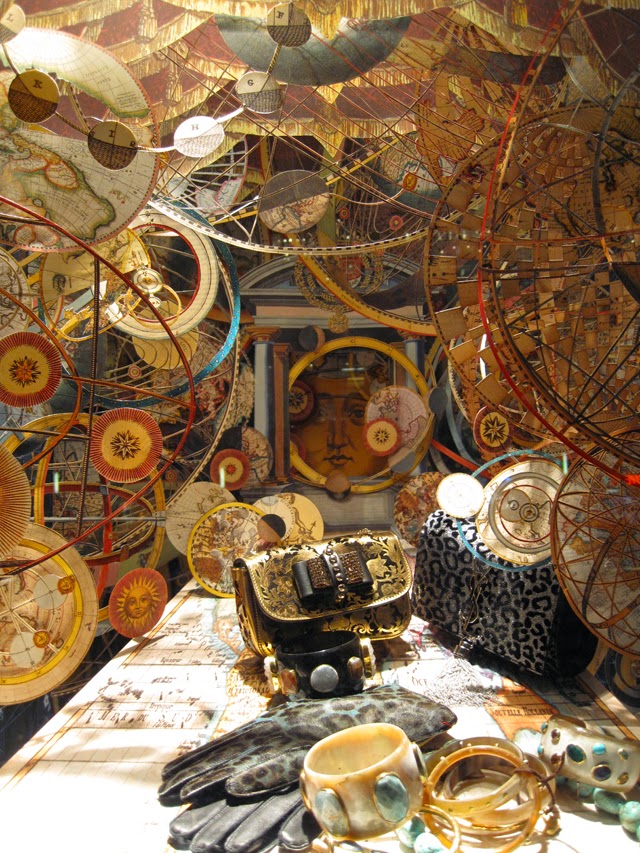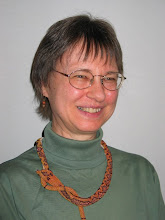 |
| Barney's exterior |
 |
| Metallic mushrooms and a giant boombox The next 2 window could only be captured properly with movies.
Still shot of window 2.
Movie of window 2.
Still shot of window 3.
Movie of window 3.
Then it was off to Bergdorf Goodman's and the nearby building that always displays large candy canes. Bergdorf's theme this year was the arts. Here are some of our favorite parts. Sculpture
Dance
Music
Theater The Literature window didn't really grab me until I realized that all of the portraits of the writers were actually done in needlepoint or embroidery. Literature Plus a soft-sculpture typewriter by Heidi Hilkin of Charles Butterworth Studio.com Even the small windows are interesting The next treat was the window next door at Van Cleef & Arpels. Van Cleef & Arpels After that, it was a stop at Tiffany's.
More jewels on Tiffany's building. The blank spots in the strings of lights are because the lights made patterns.
One of the windows. The 2 twirling, skating dogs were my favorite part of this window. Harry Winston decorated their building with their traditional jewels of light. Then it was down to Rockefeller Center to see the tree. When we got to the tree, it was dark-no lights! No one knew why. We didn't get a photo of the tree without lights because just as Don and I went to take photos of the dark tree, the lights came back on. Seriously, I pushed the button on my camera and the lights came on. The Rock Center Tree with lights back on, but the star on top has not been turned on. I found out later, courtesy of the local news, that the lights had been turned off on the tree as a tribute to Rafael Ramos and Wenjian Liu, who were murdered on the past Saturday. Saks building Our next stop was across the street to Saks Fifth Avenue. The theme was "An Enchanted Experience" and the windows showed fairy tales transplanted to NYC.
The Wicked Witch selling a poisoned apple to Snow White in Times Square
Sleeping Beauty
Rumplestiltskin in the famous, closed City Hall subway stop.
Red Riding Hood and the wolf
Cinderella The end windows at Saks displayed 2 costumes made by my friend Janet Bloor. Sadly, I didn't realize they were hers until we got home so I only took a quick photo of the one costume.
costume by Janet Bloor
A close-up shot Next on our tour was Lord & Taylor, whose theme was "On Holiday" with human-like animals and fairies. The Lord & Taylor designer even included Patience and Fortitude, the lions in front of the new York Public Library's research building. Our last stop was Macy's, whose theme was "Santa's Journey to the Stars" showing a boy who receives a magical telescope that lets him see Christmas being celebrated across the solar system.
The boy and his telescope
Santa's workshop on Venus
Last minute work under the sleigh
Hmm...a Dalek disguised as a Christmas tree?
Earth
Familiar parade
Mars
Jupiter and Saturn
Uranus and Neptune Although Macy's was open for business 24 hours/day, that was the end for us. As we headed for home, it was so hard to remember that it was only December 23 and that we wouldn't be opening presents the next morning. Still, our early window tour was a wise decision because the weather on December 24 was not nice! |















































